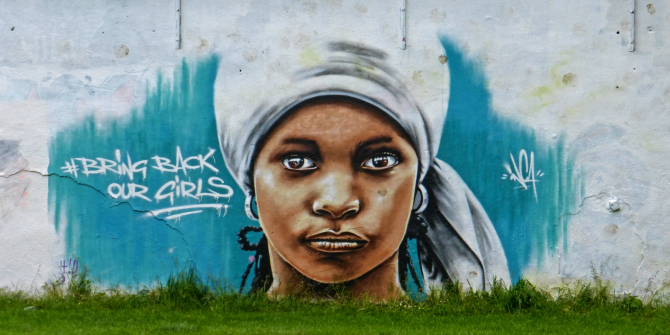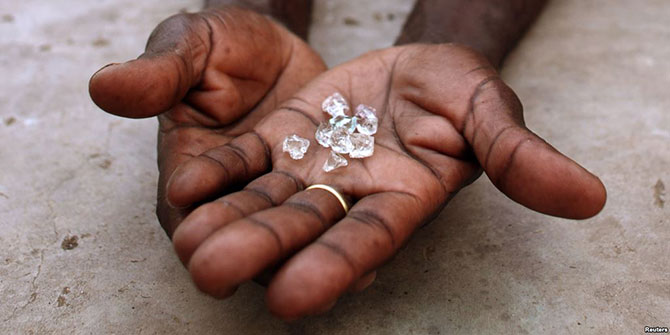LSE’s Rebecca Simson calls The New Black Middle Class in South Africa by Roger Southall an engaging read although she remains unconvinced that South Africa’s black middle class is so very different from that of other countries after all.
The emergence of a skilled, confident and assertive African middle class is a cornerstone in the popular narrative of an Africa on the rise. This discourse has focused on the economic benefits of a growing consumer class, as well as the improvements in governance that are expected to result from a growing group of citizens with the means and incentives to hold its politicians to account. In South Africa this narrative is particularly salient, as a growing black middle class is an important sign of a recovery from the legacies of apartheid and the success of the policies of transformation of the ruling African National Congress (ANC). This makes Roger Southall’s recent book, The New Black Middle Class in South Africa particularly timely. In his own words this book is ‘an attempt not so much to contradict’ the popular discourse ‘as to complicate it’. A Professor Emeritus in Sociology at the University of Witwatersrand, Southall seeks to deepen the debate by grounding South Africa’s class dynamics in a historical and political context rather than providing a descriptive focus on income or consumption patterns alone.
 His core argument is that the new black middle class in South Africa owes its social position in large part to the ANC, which makes its denizens dependent on the party-state and thus more insecure than their white counterparts. By breaking the middle class into occupational groupings he shows the importance of public sector employment to the growth of a black middle class. At the top of the occupational pyramid, black South Africans are today the majority of state managers, i.e. politicians, senior civil servants and managers of parastatals. Such appointments owe as much to party credentials as meritocratic considerations, according to Southall, which also increases the risks of demotion if individuals fall out of favour (although his account of the ANC patronage machine is relatively light in data, relying on some qualitative analysis and anecdotal accounts). In addition, today’s lower middle class is comprised of the predominantly black semi-professions and routine white-collar jobs, such as teachers, nurses, clerks, administrators and shop assistants, the majority of whom work for the bulging public sector. Their social position is also vulnerable, both due the effects of globalisation which are driving down wages in many traditional white-collar occupations, as well as the risk of wage erosion in the event of a fiscal crisis.
His core argument is that the new black middle class in South Africa owes its social position in large part to the ANC, which makes its denizens dependent on the party-state and thus more insecure than their white counterparts. By breaking the middle class into occupational groupings he shows the importance of public sector employment to the growth of a black middle class. At the top of the occupational pyramid, black South Africans are today the majority of state managers, i.e. politicians, senior civil servants and managers of parastatals. Such appointments owe as much to party credentials as meritocratic considerations, according to Southall, which also increases the risks of demotion if individuals fall out of favour (although his account of the ANC patronage machine is relatively light in data, relying on some qualitative analysis and anecdotal accounts). In addition, today’s lower middle class is comprised of the predominantly black semi-professions and routine white-collar jobs, such as teachers, nurses, clerks, administrators and shop assistants, the majority of whom work for the bulging public sector. Their social position is also vulnerable, both due the effects of globalisation which are driving down wages in many traditional white-collar occupations, as well as the risk of wage erosion in the event of a fiscal crisis.
The transformation of the private sector has been far slower but is also strongly influenced by government intervention and incentives for fostering black social upward mobility. But although the Black Economic Empowerment programme has brought more non-whites into senior positions in the private sector, their employment shares are far from representative of the racial composition of the population as a whole, and Southall shows that they command few of the real decision-making positions in industry.
The book contains interesting chapters on the conceptual challenges of defining and measuring the middle class. It also provides a rich historical context to this process of class transformation in South Africa, tracing the origins of a black middle class to the missionary penetration of the 19th century and following its stunted evolution under apartheid. Southall places particular emphasis on the late-apartheid era reforms of the 1980s, when the government and industrial leaders began to realise that the lack of educational opportunities and low wages were retarding South Africa’s growth and therefore cautiously began to allow greater social upward mobility. He then discusses how these policies evolved and accelerated after 1994. Separate chapters on education and the social world of the black middle class also add nuance to the understanding of middle class educational aspirations, consumption patterns and indebtedness.
My main quibble with Southall’s analysis however is his incomplete effort to bring the South African experience into dialogue with the history of the middle class in Africa more generally, as well as around the globe. While the introductory chapter and afterword speak to the wider context, the body of the book would have benefitted from more references to the similarities or differences with other decolonisation processes. From the late apartheid policies of allowing greater economic opportunities for long-term black urban residents which echoes the labour stabilisation debates of the late colonial era in the British and French Empires, to the parallels between Black Economic Empowerment and other Africanisation programmes, many of the South Africa’s recent experiences have precedents in other parts of the continent. Moreover, as Southall acknowledges, the public sector has been an important generator of middle class jobs across the globe, not only in postcolonial Africa but also in much of Europe. While the public sector may have been rolled back since the 1970s, it still has a big imprint on the income distribution of many high-income countries. Party appointment of senior public sector officials is also a common phenomenon in many countries and has inspired a large body of academic literature on patronage. The book would have benefited from a clear stance on what, if anything, makes the South African middle class different from that of other countries or eras. This would also help to inform one of his central questions – is South Africa’s still fragile black middle class vulnerable to economic or political reversals?
This aside, the book provides an engaging and readable account of the black middle class in South Africa and adds considerable nuance to the data-driven debates about the expansion of consumer demand. For the non-South Africa expert moreover, it provides an interesting perspective on some of the current public debates, preoccupations and tensions in post-apartheid South Africa.
The New Black Middle Class in South Africa. Roger Southall. James Currey. 2016.
Rebecca Simson is a doctoral researcher in LSE’s Department of Economic History. Her research focuses on public employment and pay in East Africa in the postcolonial era.
The views expressed in this post are those of the authors and in no way reflect those of the Africa at LSE blog or the London School of Economics and Political Science.





